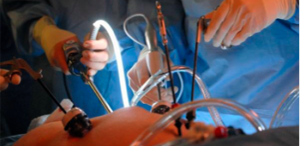
The growing problem of widespread obesity and the bariatric interventions aimed at mitigating its impact on health have introduced a fresh approach to managing the weight and nutritional well-being of individuals who have undergone bariatric procedures.
Bariatric methods have proven effective in addressing severe obesity (grades II and III), resulting in a significant rise in the global number of bariatric surgeries conducted [1].While the surgery itself contributes to the desired weight loss, the emphasis remains on food reeducation and physical activity.
Although the Food Pyramid is commonly used as a dietary guide, it doesn’t offer a precise blueprint for composing daily meals for bariatric patients [1].
Regarding the standard approach to managing obesity, the established nutritional plate methods for post-bariatric surgery patients encompass two key aspects: (1) achieving a calorie deficit during the weight loss stage, and (2) ensuring an adequate intake of protein.
Several nutritional recommendations have been issued for post-bariatric patients, primarily concentrating on short-term dietary advice. It is crucial to underscore that enduring modifications in eating habits and physical activity are essential for achieving effective, long-term weight loss and averting potential complications down the road [2].
In this text we will explore the Bariatric Plate method, a straightforward approach designed to illustrate to patients that underwent bariatric surgery how they can distribute macro and micronutrients in their daily meals.
This helps support their long-term weight loss goals and ensures the preservation of their nutritional well-being [1].
- Caloric restriction
The key to achieving successful weight loss post-surgery largely revolves around effective calorie restriction. However, research has been done, and there is no standard goal of calories that a post-bariatric surgery patient needs to achieve or follow as a rule, every person is different and should have a personal meal method that better suits their needs. Maladaptive eating behaviors have been identified as a primary factor behind excessive calorie consumption and insufficient weight loss after bariatric surgery [1].
In clinical practice, nutritionists should collaborate with patients to calculate the appropriate daily caloric intake, considering factors such as (1) physical activity (which raises overall metabolic rate which means more burnt calories) and (2) protein intake (to optimize this nutrient use and prevent it from being solely an energy source) [2]. The bariatric plate method daily caloric suggests that calorie intake begins at around 500 kcal with liquid nutrition and gradually increases to a solid form, reaching up to 1,200 kcal per day. Nutritional guidelines of post-bariatric surgery are outlined in recommendations that highlight the importance of protein, recommended at a range of 1-1.5 grams per kilogram of ideal weight (approximately 60-80 grams per day, accounting for 25% of the total intake), along with carbohydrates at 45% and fats at 30% [1].
- Proteins
The bariatric plate method highlights proteins as a crucial nutrient to monitor post-bariatric surgery (2). You can find proteins in a wide variety of animal and plant sources . Complete sources encompass meat, eggs, milk, and fish. Legumes like beans, lentils, soybeans, and chickpeas stand out among plant sources for their protein content. While most essential amino acids are present in various foods, specific conditions like bariatric surgery may necessitate supplementation. Whey protein usage is recommended for meeting daily nutritional requirements post-surgery and should be continued over the long term. An advisable guideline is for about half (50%) of the plate to consist of protein sources to maintain a balanced diet [1].
- Vitamins and minerals
In the bariatric plate method, approximately 30% of the plate should contain a mix of vitamins, minerals, and fibers commonly present in fruits and vegetables. These foods, necessitating chewing due to their fibrous texture, should have daily variety. This diversity aids the immune system, supports skin renewal, and helps regulate metabolism. A helpful tactic for ensuring a broad intake of nutrients during meals involves organizing these nutrients by their colors. Yellow and red fruits and vegetables, which are high in vitamin A (a fat-soluble vitamin), are vital for maintaining healthy hair, skin, and nails. Carrots, beets, pumpkin, and bovine liver are examples of these sources.
Green vegetables, such as leafy greens like cabbage, mustard, chard, lettuce, and arugula, are rich in B-complex vitamins and contribute to preventing anemia. Citrus fruits serve as an important source of vitamin C, aiding in iron absorption and boosting immunity. Oranges, lemons, passion fruit, acerola, green apples, tomatoes, and grapes are among these sources. White vegetables like onions, garlic, mushrooms, cauliflower, palm hearts, and okra are particularly effective in preventing cardiovascular diseases and cancer [1].
- Carbohydrates
The rest of the plate should consist of carbohydrates, essential for supplying energy needed for everyday activities. Choosing whole-grain options like whole-grain breads, rice, pasta, and cereals among this group can lower the intake of sugars and fats in bariatric patients.
This promotes heart health and contributes to a greater sense of fullness, which helps manage appetite more effectively [1]. In about 25 to 50% of patients, after a bariatric surgery, there can be alterations in the motor functions of the stomach, luckily only 5 to 10% develop symptoms, this is called the Dumping syndrome, and it manifests as sensitivity to sugar. These symptoms can be managed by dietary modifications, like avoiding simple sugar (e.g. candy, sodas, cookies) intake and replacing them with complex carbohydrates (pasta, fruit, vegetables, etc.)
Summary
The available information indicates that patients undergoing bariatric surgery necessitate a comprehensive method to navigate the changes required post-operation. Customized dietary guidance is crucial both before and after surgery, accompanied by ongoing support to establish healthier eating habits long-term. The bariatric plate method also supports the idea of an interdisciplinary team, which plays a pivotal role in ensuring patients comprehend the surgical process, the necessity for altering eating behaviors and food choices, and in providing robust social support [2].
The plate method, an instructional technique for meal planning, possesses multiple qualities that make it appealing for use among adults. Teaching nutrition by advocating simple, wholesome meal structures that emphasize overall dietary quality and offer a clear idea of the ideal food portions on the plate results in a constructive and unified approach in imparting practical dietary advice [3].
Overall, a post-bariatric surgery patient must understand that his old alimentary habits need to change because now their stomach has a different structure, therefore works in a different way (primarly due to alterations in nutrients absorption).
The bariatric plate method is a simple yet effective way to address changes in nutrients needs compared to what a normal persons plate looks like.
Together with this, the water intake, use of supplements and the physical activity must be incorporated in the daily routine of a post-bariatric surgery patient [1].
Contact Us Today
Our team is ready to help you. At LIMARP, patients will always receive warm, sincere and professional
answers. For a free evaluation please call us at (619) 270 8823, fill out a contact form at
our website, or message through any of our social media pages.
References
- Maria Paula Carlini Cambi. Giorgio Alfredo Pedroso Baretta. Bariatric diet guide: plate model template for bariatric surgery patients. ABCD Arq Bras Cir Dig. 2018;31 (2):e1375
- Violeta L. Moize. Xavier Pi-Sunyer. Heidi Mochari. Josep Vidal. Nutritional Pyramid for post-gastric bypass patients. OBES SURG (2010) 20:1133-1141
- Katheryn M. Camelon RD. Karin Hadell. Paivi T. Jansen, MSc. Kaisa J. Ketonen, Msc, Heli M. Kohtamaki, Msc. Sari Makmatilla, MD, Msc. Marja-Leena Tormala, Msc. Raisa H. Valve, Msc. J Am Diet Assoc. 1998; 98:1155-1158


